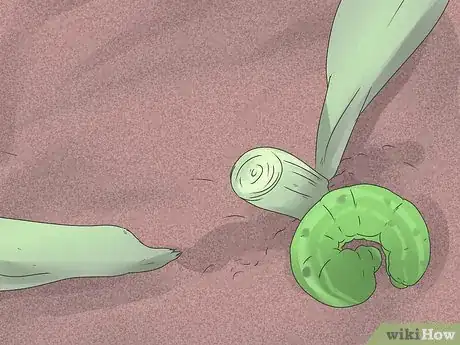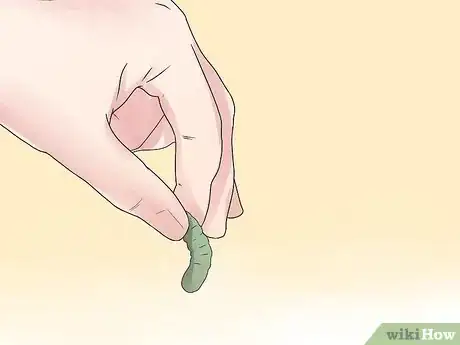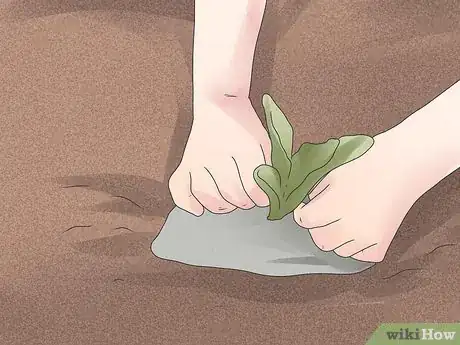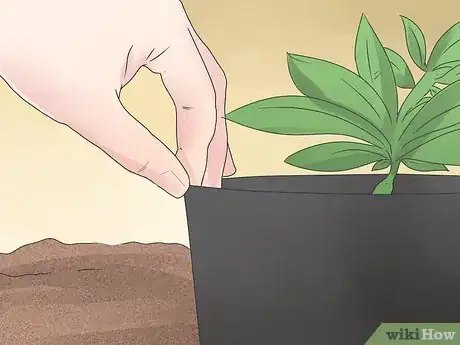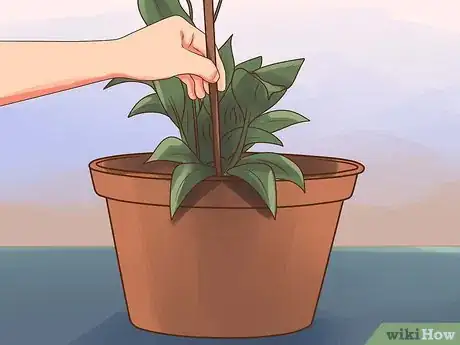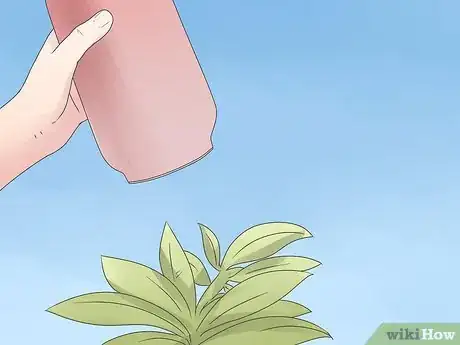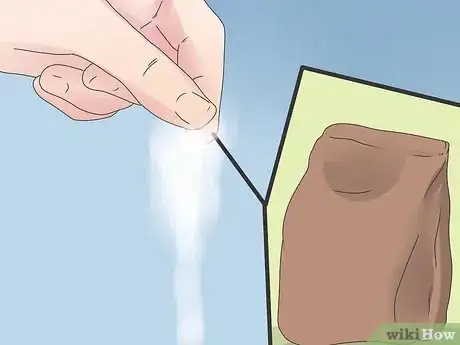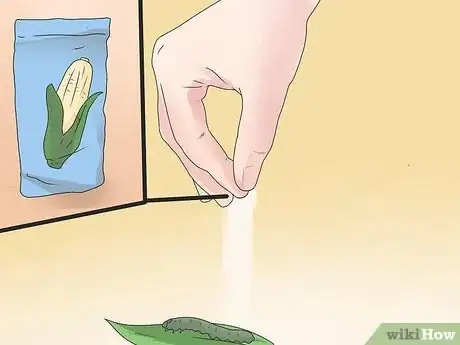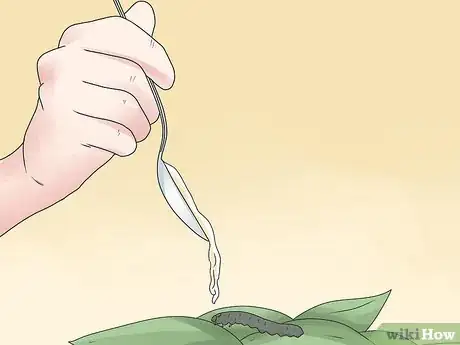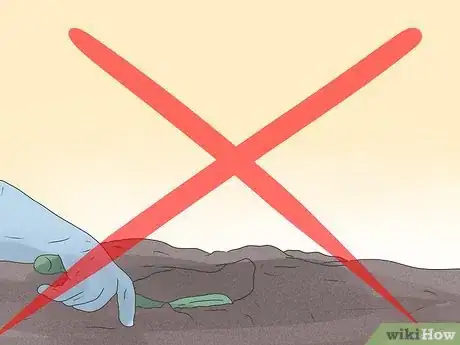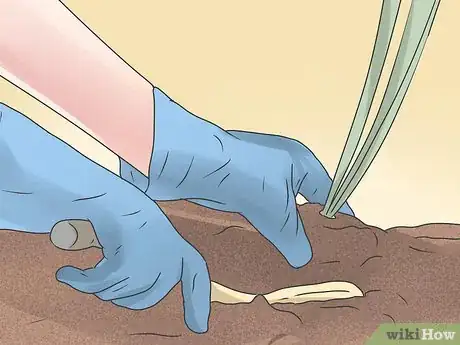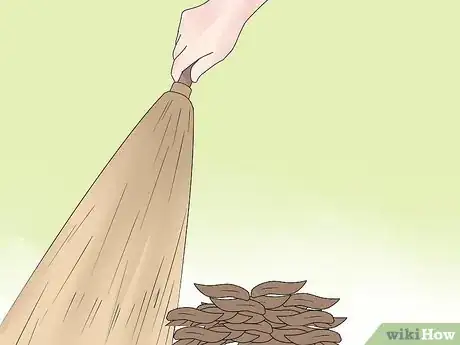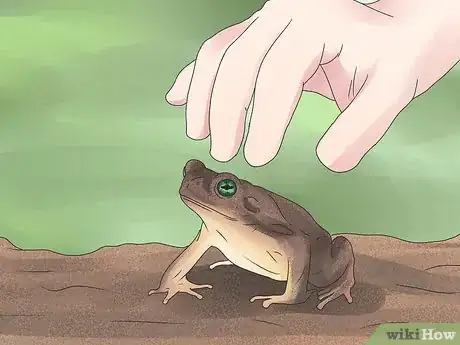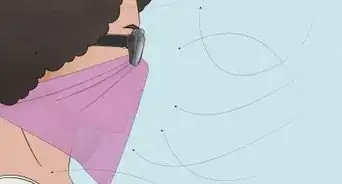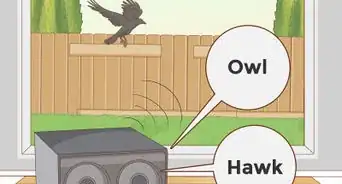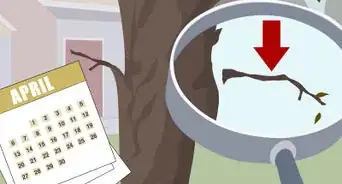This article was co-authored by Andrew Carberry, MPH. Andrew Carberry is a Food Systems Expert and the Senior Program Associate at the Wallace Centere at Winrock International in Little Rock, Arkansas. He has worked in food systems since 2008 and has experience working on farm-to-school projects, food safety programs, and working with local and state coalitions in Arkansas. He is a graduate of the College of William and Mary and holds a Masters degree in public health and nutrition from the University of Tennessee.
wikiHow marks an article as reader-approved once it receives enough positive feedback. In this case, 82% of readers who voted found the article helpful, earning it our reader-approved status.
This article has been viewed 212,859 times.
It's every gardener's nightmare: you walk outside one morning to see that your plants, bursting with life the evening before, have been sawed in half - struck down by cutworms. These nocturnal worms are the larvae of several different moth species. They cut down young plants when they feed, and are capable of destroying an entire field. The good news is that cutworms can be controlled through using a few easy tactics that don't require the use of poisonous chemicals. See Step 1 to find out how.
Steps
Monitoring and Collaring Your Plants
-
1Know the signs of a cutworm infestation. You won't see cutworms during the day, since they feed at night. Most gardeners don't know they have a cutworm problem until they see evidence in the morning after a night of feasting has occurred. By then, there's no telling how many worms are in the garden. Catching the population before it explodes will help save your garden. Here's what to look for:
- Plants cut off near the base of their stems.
- Plants that are wilting or damaged.
- Cutworm droppings.
- Cutworms themselves, which you can find by overturning the soil with your hands in the vicinity of the damage.[1] They can be many different colors, including grey, brown, pink, black, and so on. Some are spotted, some have stripes, and some have no markings.
-
2Pick cutworms off your plants at night. Go out at night with a flashlight and pick them off your plants, one by one. Place them in a pail of soapy water to drown and then discard them. Repeat this every few nights until you notice the cutworm population declining. Keep checking throughout the summer for more cutworms.Advertisement
-
3Make plant collars. Cutworms like to feast on plants by chewing through the stems, essentially decapitating your precious vegetable garden. If you place barriers around the stems, the cutworms have a much more difficult time accessing the stems. Cut 4-inch pieces of cardboard, plastic, or another firm material cut in the shape of a tube to serve as collars for your plants. You could also use cardboard tubes or metal cans with the ends removed.
- The downside to collaring is that every single stem will need its own collar to keep the cutworms away. If you have a large garden with hundreds of plants, you may need to combine this method with others so you don't spend your whole summer fashioning little plant collars.
-
4Install the collars around the plant stems. Push them into the soil about an inch deep, so the collars stand about 3 inches (7.6 cm) high. The cutworms won't be able to climb the surface of the cardboard and metal or scoot in underneath the bottom. If you cut out the collars from cardboard or plastic, make sure the seam is securely taped so that there's no gap for cutworms to crawl in.
-
5Bolster the plants' stems. To further protect the plants, you can bolster the stems to prevent cutworms from being about to eat through them. Cut a plastic drinking straw to the appropriate lengths. Then, cut a slit in each piece lengthwise and slip the straws over the plant stems. Poke the ends beneath the surface of the soil.
- Alternatively, you can wrap each stem with a piece of cardboard, thick paper or aluminum foil, taking care to push the sleeve below the soil.
Using Natural Deterrents and Pesticides
-
1Apply Bacillus thuringiensis in your garden. This is a bacterium that is known to kill cutworms, and it's widely available in garden supply stores. It's a natural way to get rid of cutworms without causing harm to plants or animals. Apply it to the soil in the affected area.
- This bacterium harms other types of moths and butterflies, so if you don't want to hurt any other types of insects, use a different method.
- Spray pesticides in the afternoon for best results against cutworms. Since they feed after dark, you want the pesticide to be freshly applied when they come to dinner. Reapply the pesticide after each rain until the plants are large enough to be safe from the worms.
-
2Try diatomaceous earth. This is a natural powder made from ground up fossils that can be sprinkled around the affected area. It isn't harmful to humans, plants or animals, but it kills insects that walk over it by piercing them and causing them dehydrate. Be sure not to apply this to areas where you want to promote a healthy insect population.
- Apply the powder around the base of any plants where you suspect cutworm activity. You can apply with a bulb applicator to avoid getting it in your eyes or inhaling it, as this may cause irritation.
- Try ground up eggshells or coffee grounds as an alternative.
-
3Use cornmeal. Cutworms love to eat cornmeal, but it hurts their digestive system. Many will overeat it to the point of killing themselves. Sprinkle some in the affected area of your garden. Just don't overdo it, or you may draw other pests.[2]
-
4Make a molasses treatment. If you mix molasses with sawdust and wheat bran, you'll create a thick paste that can be painted in circles around the plants in the area where cutworms hang out. When they crawl over the molasses mixture, it will get stuck to their bodies and prevent them from ruining your plants.[3]
Changing Your Garden Environment
-
1Delay planting your garden for a couple of weeks if possible. After the initial eating frenzy in early spring, the number of cutworm larvae and the extent of the damage from them generally decrease.
- Consider planting a perennial flower garden. Plant it around the outside of your vegetable garden as a form of cutworm prevention. Unlike weeds and tall grasses, the flowers die off in the fall when the adults are looking for places to lay eggs.
- Till the soil in the spring before planting to expose and kill larvae that wintered over in the soil.
-
2Keep your garden neat. Remove weeds from your garden and from the areas around your garden to cut back on places where moths can lay eggs. This also removes some food that keeps cutworms alive. Keep the grass around the garden cut short.
-
3Clean up your garden after harvest. Remove all plant debris from the garden after harvest to discourage adult moths from laying eggs. Till the soil again in the fall to expose larvae and decrease the number that survive winter hibernation.
- If you can, consider allowing chickens to graze in your garden after tilling. They will eat any cutworms present in the soil.
-
4Make your garden hospitable to cutworm predators. Keeping your yard animal-friendly is a great way to control cutworms, since birds and many other animals love to eat them. Encourage the following animals to enjoy cutworms in your garden:
- Toads
- Moles
- Fireflies
- Blackbirds
- Meadowlarks
Expert Q&A
Did you know you can get expert answers for this article?
Unlock expert answers by supporting wikiHow
-
QuestionWhat is the best pesticide for controlling cutworms?
 Andrew Carberry, MPHAndrew Carberry is a Food Systems Expert and the Senior Program Associate at the Wallace Centere at Winrock International in Little Rock, Arkansas. He has worked in food systems since 2008 and has experience working on farm-to-school projects, food safety programs, and working with local and state coalitions in Arkansas. He is a graduate of the College of William and Mary and holds a Masters degree in public health and nutrition from the University of Tennessee.
Andrew Carberry, MPHAndrew Carberry is a Food Systems Expert and the Senior Program Associate at the Wallace Centere at Winrock International in Little Rock, Arkansas. He has worked in food systems since 2008 and has experience working on farm-to-school projects, food safety programs, and working with local and state coalitions in Arkansas. He is a graduate of the College of William and Mary and holds a Masters degree in public health and nutrition from the University of Tennessee.
Food Systems Expert
-
QuestionIs there something safe I can put on my lawn to get rid of cutworms?
 Community AnswerBacillus thuringiensis, an organic powder, will kill grubs and cutworm larva if planted early enough.
Community AnswerBacillus thuringiensis, an organic powder, will kill grubs and cutworm larva if planted early enough. -
QuestionWhere do cutworms come from?
 Community AnswerCutworms come from moths -- they are their larvae (or babies).
Community AnswerCutworms come from moths -- they are their larvae (or babies).
Warnings
- Most species of cutworms attack the plants at ground level, but some subterranean species live underground attacking the roots of the plants and some climbing species go to the tops of the plants stripping the leaves.⧼thumbs_response⧽
References
About This Article
To control cutworms, start by removing the ends of metal cans, or cutting cardboard or plastic to make tubes. Then, push these “collars” into the dirt around your plant stems, so they form a 1-inch deep and 3-inch tall barrier around your plants. For even better results, combine “collaring” with another method of prevention, like sprinkling cornmeal around your plants to kill cutworms that overindulge. Alternatively, you can make a sticky paste from molasses, sawdust, and wheat bran, then put it around your plants to catch approaching cutworms. For information from our Gardening reviewer on how to buy and use natural pesticides to control cutworms, read on!
